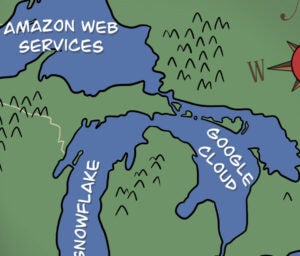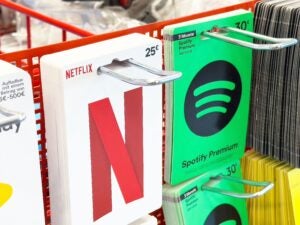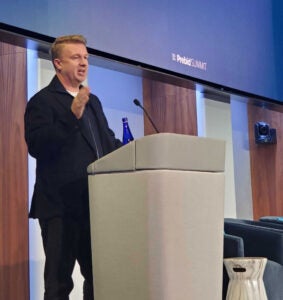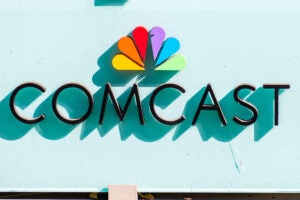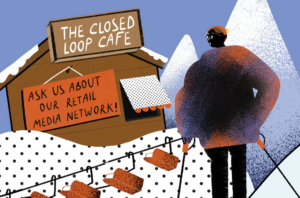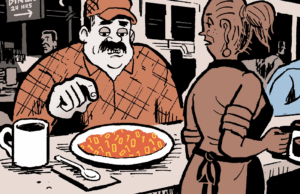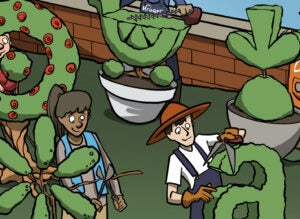 Back in 2008, before the likes of “Serial,” award-winning public radio producer Nate DiMeo was sharing little-known pearls of American history in his podcast, “The Memory Palace.”
Back in 2008, before the likes of “Serial,” award-winning public radio producer Nate DiMeo was sharing little-known pearls of American history in his podcast, “The Memory Palace.”
The show, in which DiMeo narrates forgotten moments to a curated selection of music, has maintained a loyal, mid-sized audience for the past eight years. But despite donations and bits of ad revenue from early sponsors like Audible, the show had no real monetization strategy.
“For several years while I was doing this strange idiosyncratic show, I peaked at 75,000 listeners. I felt like there were a ton of people, but there was no business infrastructure to make any money off of doing this,” DiMeo said.
Eventually, the market began to catch up with DiMeo’s expectations.
In the past year, podcasting has grown from a niche space to an explosively popular media format – for both listeners and (to a lesser extent) advertisers. With a professional public radio sound and a strong legacy, “The Memory Palace” grew from DiMeo’s labor of love into a lucrative production.
A partnership with Radiotopia, PRX’s podcasting network, provided “The Memory Palace” with the tools to monetize and scale. “Our objective was to even out the production schedule, take this gem and make it a habitual listen,” said Kerri Hoffman, COO of PRX.
Radiotopia creates sponsorships for “The Memory Palace,” whose premium inventory sells for about $6,000 a spot. High CPMs are typical in podcasting; as in old-timey radio, the host often reads the ad. MailChimp is one of Radiotopia’s key long-term sponsors, along with Squarespace and Slack.
The majority of revenue goes to the producer, who maintains ownership and creative license of his or her show on the network. Radiotopia takes a cut of advertising and fundraising revenue.
Since the partnership, “The Memory Palace’s” monthly downloads have risen sharply from 250,000 to just less than 1 million due to a regularized production schedule, as well as brand association and cross-promotional opportunities by the network.
DiMeo’s fortunes have grown along with Radiotopia’s. Launched in 2014 as the most successful Kickstarter campaign in the podcast category to date, Radiotopia has grown tenfold in the past two years, from 950,000 monthly downloads to 11 million across its network. Sponsorship revenue has increased 433% since launch, but Hoffman declined to share specific revenue figures.
AdExchanger Daily
Get our editors’ roundup delivered to your inbox every weekday.
Daily Roundup
Shows on Radiotopia see an average revenue increase of 25% after they join up. “We do what we do best — create the tech to support these shows — and the shows can focus on creating great content,” said Hoffman.
The network carefully executes ad placement in all of its podcasts to support what Hoffman calls “the three-legged stool”: revenue from advertising, donations and grant money.
“In a show like ‘Memory Palace,’ [DiMeo] gets into a character-driven narrative that the listener doesn’t want interrupted,” she said. “In other shows, one recorded segment moves into an interview for a second segment. We let the content be the guide on where the placement matters.”
PRX has developed its own dynamic ad insertion software, Dovetail, which replaces outdated ads with relevant content using improved logic such as geotagging. This enhances monetization opportunities – especially in evergreen content like “The Memory Palace” – while improving the listener experience. “We want our ads to be good, produced well and sound like the rest of the show so that they’re not too abrupt. They need to be in good taste,” Hoffman said.
As dynamic ad insertion becomes more accessible in podcasting (Gimlet and Panoply also use the technology), a flood of new inventory could lead to lower CPM rates.
Ad tech has broken down the monetization wall, but measurement in podcasting remains a challenge. The key metric is number of downloads, making it difficult to tell whether or not a user actually listened to the podcast, let alone an ad.
Radiotopia uses a monthly downloads metric, assuming two-thirds translate into listens. “There will be some shakeout in terms of understanding the audience better: Who is it? How old are they? What economic bracket do they belong to? When did they drop off on the show?” Hoffman said.
“On the one hand, the advertising community is excited about jumping into the podcast business, but then they get in there and they discover that it doesn’t look like the business they’re already in,” DiMeo said. “PRX and Radiotopia are effectively starting to find and build technological solutions — new ways to really get a handle on audiences – and then use that to deliver the kind of metrics that advertisers want so they can target audiences.”
Hoffman, who describes podcasting as “tailor-made for the mobile environment,” said the media format will continue to grow in popularity. “As we improve our technology and produce stronger content, we will continue to attract new listeners.”





